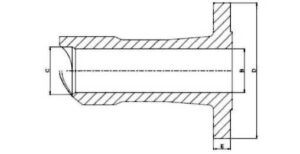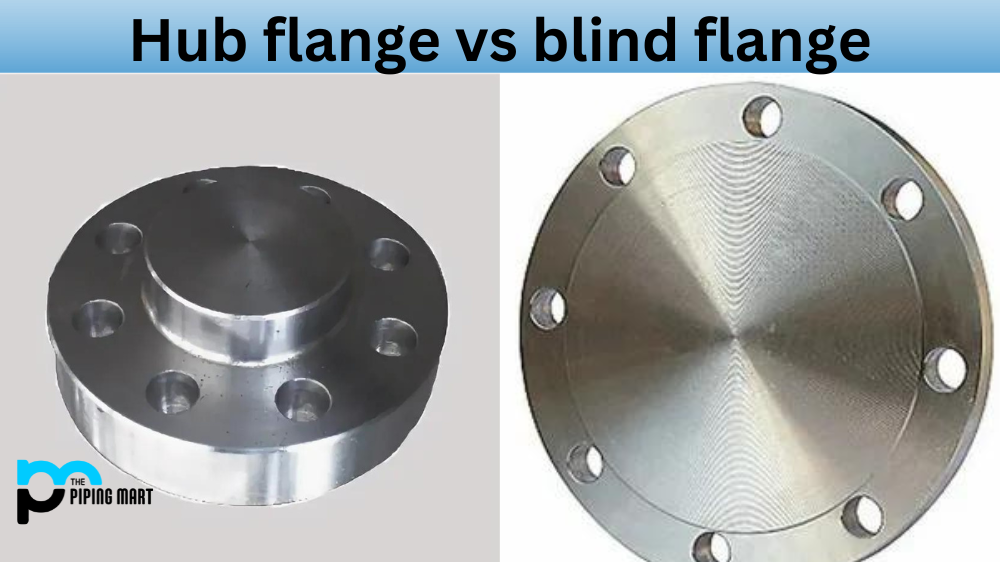If you’re a professional welder or simply someone who knows their way around the workshop, then chances are you’ve heard of Nipo flanges. This type of flange is popularly used in welding and is known for its strength and durability. In this blog post, we will discuss what Nipo flanges are, their uses, and how to weld them correctly.
What Are Nipo Flanges?
Nipo flanges are a type of pipe fitting that is most commonly used in welding applications. They are designed to provide a secure seal between two pipes without the need for welding. Nipo flanges come in various sizes and materials, such as steel and stainless steel. The purpose of using a Nipo flange is to create an airtight connection between two pipes that can withstand high temperatures, pressures, and vibrations.
Nipo Flange Uses
Nipo flanges are mainly used for welding purposes due to their ability to provide a strong seal between two pipes. They are also commonly used in cooling towers, water systems, gas lines, fire sprinkler systems, chemical plants, power plants, HVAC systems, mining operations, and more.
Nipo Flange Welding
When it comes to welding a nipo flange correctly, there are several steps that need to be taken into consideration. Firstly you will need to ensure that both the surfaces of the pipe fittings have been properly cleaned before welding begins so there is no debris or dirt left on the surface, which may interfere with the process. Secondly, you will need to use the right type of filler metal when welding your nipo flange; this should be determined based on the material being welded together, as different metals require different filler metals for optimum results. Finally, you will also need to make sure that you have an appropriate amount of heat applied during the process so that your joint is strong and secure when completed.
Nipo Flange Types
There are many types of no flanges available depending on your needs; some common examples include socket welded (SW), screwed (SC), lap joint (LJ) welded neck (WN), threaded (THD), full face (FF) and blind (BL). Each type has its own advantages and disadvantages, so it’s important to research each one before deciding which one is best suited for your application needs. Additionally, there are also different grades available depending on what kind of pressure or temperature resistance you require from your nipo flange, so make sure you select one that meets all your requirements before purchase.
Nipo Flange Dimension
|
RATING |
NOMINAL PIPE SIZE FROM 3/4″ TO 36″ | |||||
|
Bore schedule |
B |
C |
D |
E |
Weight [kg] |
|
|
STD |
15,8 |
18,5 |
0,9 |
|||
|
150# |
XS |
13,8 |
17,6 |
88,9 |
11,2 |
0,9 |
|
160 |
11,7 |
11,7 |
0,9 |
|||
|
XXS |
6,4 |
6,4 |
0,9 |
|||
|
Bore schedule |
B |
C |
D |
E |
Weight [kg] |
|
|
STD |
15,8 |
18,5 |
1,2 |
|||
|
300# |
XS |
13,8 |
17,6 |
95,3 |
14,3 |
1,2 |
|
160 |
11,7 |
11,7 |
1,2 |
|||
|
XXS |
6,4 |
6,4 |
1,2 |
|||
|
Bore schedule |
B |
C |
D |
E |
Weight [kg] |
|
|
STD |
15,8 |
18,5 |
1,3 |
|||
|
600# |
XS |
13,8 |
17,6 |
95,3 |
14,3 |
1,3 |
|
160 |
11,7 |
11,7 |
1,3 |
|||
|
XXS |
6,4 |
6,4 |
1,3 |
|||
|
Bore schedule |
B |
C |
D |
E |
Weight [kg] |
|
|
STD |
15,8 |
18,5 |
2,4 |
|||
|
900# |
XS |
13,8 |
17,6 |
120,6 |
22,4 |
2,4 |
|
160 |
11,7 |
11,7 |
2,4 |
|||
|
XXS |
6,4 |
6,4 |
2,4 |
|||
|
Bore schedule |
B |
C |
D |
E |
Weight [kg] |
|
|
STD |
15,8 |
18,5 |
2,4 |
|||
|
1500# |
XS |
13,8 |
17,6 |
120,6 |
22,4 |
2,4 |
|
160 |
11,7 |
11,7 |
2,4 |
|||
|
XXS |
6,4 |
6,4 |
2,4 |
|||
|
Bore schedule |
B |
C |
D |
E |
Weight [kg] |
|
|
STD |
15,8 |
18,5 |
3,6 |
|||
|
2500# |
XS |
13,8 |
17,6 |
133,4 |
30,2 |
3,6 |
|
160 |
11,7 |
11,7 |
3,6 |
|||
|
XXS |
6,4 |
6,4 |
3,6 |
|||
Conclusion
Nipo flanges are essential tools for welders because they offer strength and durability, creating airtight connections between pipes without the need for additional welding. To weld these fittings correctly, it’s crucial to clean all surfaces thoroughly and select the appropriate grade and type based on your specific requirements. By following these steps, you can ensure that your joints will remain strong for years to come.

Pipingmart is a B2B portal that specializes in metal, industrial and piping items. Additionally, we share the latest information and information about materials, products and various types of grades to assist businesses that are involved in this business.





